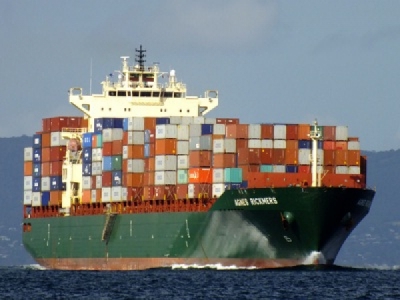
Posted on September 15, 2016
“I am big. It’s the pictures that got small,” protests the ageing silent film star Norma Desmond in Sunset Boulevard. The same could be said about global trade by Maersk Line and other shipping companies whose gargantuan container vessels make their way between Asia, the US and Europe part empty.
The bankruptcy of Hanjin Shipping, the world’s seventh-largest operator, has made the mismatch of ambitions and reality very clear. This was supposed to be the age of the ultra-large container ship, piled with thousands of steel boxes holding clothing, toys and Apple iPhone 7s. The world turns out to need smaller ships, or fewer of them.
Hanjin ships anchored offshore since last week because ports would not touch them, or sequestered in Singapore and China, could soon be unloaded. But the shock of the first bankruptcy of a major container shipping company since the collapse in 1986 of United States Lines will keep reverberating.
It is always puzzling with hindsight when companies in cyclical industries such as mining and reinsurance repeat the same mistake. They invest heavily near the peak of the cycle, trying to beat competitors. Then a downturn arrives at the same time as their new capacity, prices plunge and the weakest collapse. Short memories and young executives are probably to blame.
Shipping companies have an excuse: they have not been through a crisis of this length and intensity before. Since Sea-Land, founded by the industry’s pioneer, Malcolm McLean, loaded the first box containers in Newark, New Jersey, in April 1956, the industry has mostly grown.
Container ships either gained market share from vessels that stowed cargo piece by piece, or overall demand rose as world trade outpaced that of the world economy — or both. The downturns lasted only for a year or two (US Lines was one of McLean’s failed ventures) and governments or creditors kept weak companies afloat.
The supercycle has turned for two reasons. One is that growth in global trade has sagged. It has expanded in line with global economic growth, not faster, for the past five years, having been increasing at double that rate during the previous five years, according to the World Trade Organisation.
Rapid globalisation, which unleashed demand for ships carrying goods from China, has eased and is unlikely to return quickly. The political climate on both right and left has turned against multilateral trade deals between the US, the EU and countries in Asia. Discontent about the impact of trade has swayed the presidential campaigns of both Donald Trump and Hillary Clinton.
Second, shipping companies grew faster than even buoyant globalisation justified. The average size of container ships has increased by 90 per cent in the past two decades, and total fleet capacity in 2015 was four times that of 2000. Shipbuilding has accelerated since 2007, becoming “completely disconnected” from levels of demand, according to one OECD study.
The ultimate symbols of this are ultra-large container ships, such as the 20 Triple E vessels brought into service by Maersk since 2013. The ships cost $190m each and carry the equivalent of 18,000 of the original 20-foot containers (many modern ones are twice this size).
Maersk’s competitors have since launched even larger vessels.
More ships are now at sea than in the past. Container ships operate like buses on fixed timetables, unlike bulk carriers, which are akin to taxis. Shipping companies once sailed weekly but, in 2011, Maersk launched its Daily Maersk service from China to northern Europe. It scaled back the service last year because of weak demand.
Having rebounded from the 2008 crisis with a couple of very profitable years, shipping companies face an intense glut. More and larger ships combined with weak demand have created overcapacity of up to 30 per cent.
In theory, Maersk and its largest rivals, such as Mediterranean Shipping and CMA CGM ought to benefit from the Hanjin bankruptcy. If smaller companies with less capital fail, it should push shipping capacity out of the industry and raise rates. This was the reason Maersk built ultra-large ships: to achieve economies of scale and make life harder for Hanjin and others.
It has not worked. Maersk Line has swung into loss this year and its parent AP Møller-Maersk replaced its own chief executive in June; Soren Skou, the new boss, is planning a restructure. The Triple E expansion worked only too well: instead of steadily squeezing its rivals, Maersk rapidly crushed everyone including itself.
The industry plainly needs to cut capacity; the difficulty is summoning the nerve to take painful action. Bankruptcies and mergers such as Hapag-Lloyd’s acquisition of United Arab Shipping in June are a start. But reducing the number of shipping companies does not necessarily cut the number of vessels: companies have often kept ships at anchor in periods of subdued demand rather than breaking them up.
Ships must be destroyed this time, even big, expensive ones. Ultra-large, single-hulled oil supertankers were all the rage in the 1970s; you do not see many of those any more.





